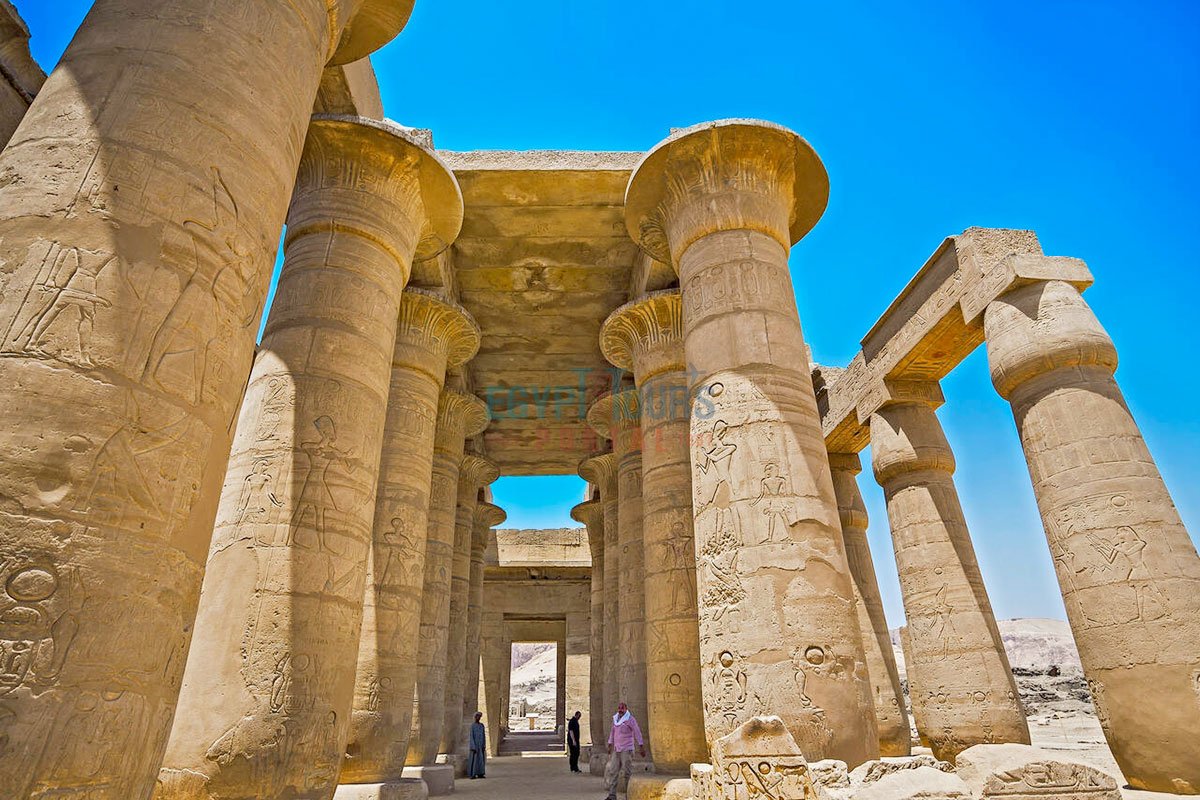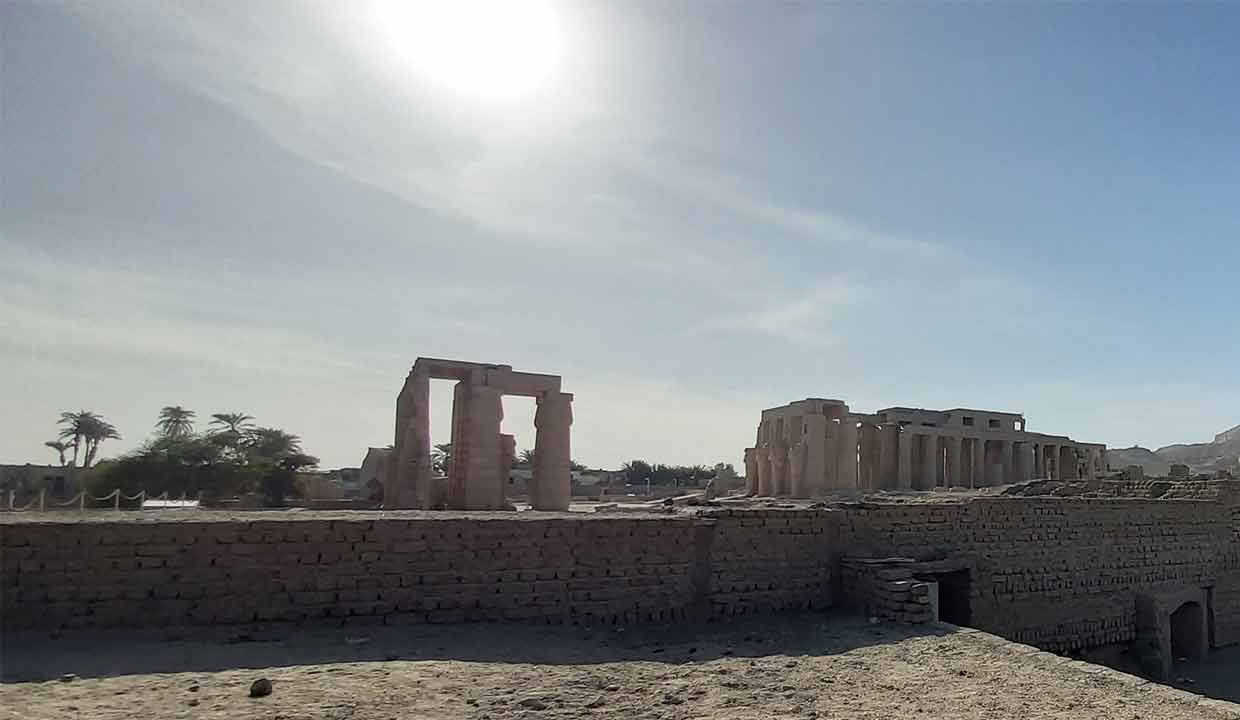Amazing Ramesseum : Luxor’s Majestic of Ramesses II
Luxor’s gem: the Ramesseum. Walk amidst ancient reliefs, witnessing the pharaoh’s grandeur. An unforgettable journey awaits!
The Ramesseum, located on the west bank of the River Nile in Luxor’s Theban Necropolis, is the memorial temple dedicated to the illustrious Pharaoh Ramesses II. An architectural marvel, this ancient edifice stands as a testament to the grandeur, legacy, and ambition of one of Egypt’s most powerful rulers.
Historical Overview:
Ramesses II, also known as Ramesses the Great, reigned during the 19th Dynasty of Egypt, approximately from 1279 to 1213 BCE. His reign marked a period of prosperity, monumental construction, and military conquests. The Ramesseum was conceived as a “House of Millions of Years” – a place where the king’s memory would endure for eternity.
Architectural and Artistic Splendor:
The layout of the Ramesseum follows the traditional design of New Kingdom temples: an axis with courts, pylon gates, hypostyle halls, and sanctuaries. However, what sets the Ramesseum apart are its detailed carvings and inscriptions that showcase Ramesses’ triumphs and dedication to the gods.
- The First Courtyard: As one enters through the main pylon, they are greeted by the remains of colossal statues of Ramesses II. The once towering statues, although now fragmented, give a glimpse into the scale and ambition of the monument.
- Hypostyle Hall: Beyond the courtyard, one steps into the grand hypostyle hall, supported by soaring pillars adorned with intricate carvings showcasing the king’s religious devotion and military expeditions.
- The Qadesh Battle Inscriptions: Among the most famous reliefs are those depicting the Battle of Qadesh against the Hittites. This significant battle, although not conclusively a win for the Egyptians, was propagandized as a great victory for Ramesses II.
- The Osiride Statues: Further into the temple, one encounters statues depicting Ramesses II in the form of Osiris, the god of the afterlife. This fusion of pharaoh and deity was a potent symbol of the divine nature of kingship in ancient Egypt.

The Colossal Statue:
One of the Ramesseum’s most renowned artifacts is a colossal limestone statue of Ramesses II. Originally standing at a staggering 57 feet (about 17 meters) and weighing over 1,000 tons, it depicts the pharaoh seated, symbolizing his eternal power and majesty. While the statue is mostly in ruins today, a massive fragment of the statue’s head and torso still rests at the site, evoking awe among visitors.
Significance in Modern Culture:
The Ramesseum, with its majestic ruins and giant statues, has captured the imagination of many. In fact, English poet Percy Bysshe Shelley was inspired by the shattered visage of the colossal statue to pen his famous sonnet “Ozymandias.” Through this work, Shelley muses on the impermanence of human achievements in the face of time, with the Ramesseum as the backdrop.
Preservation and Tourism:
Today, the Ramesseum is recognized as a UNESCO World Heritage Site as part of the Theban Necropolis. Efforts are continually being made to conserve the temple and its artifacts, given the significance of the site to Egypt’s cultural and historical heritage.
Every year, the Ramesseum draws thousands of tourists, scholars, and archaeology enthusiasts. As they walk through the ancient halls, archways, and courtyards, the air is thick with history, telling tales of a bygone era when Pharaohs ruled, and the land of Egypt was at the zenith of its glory.
Conclusion:
The Ramesseum is not just a temple; it’s a chronicle etched in stone, celebrating the life and times of Ramesses II. Although time has worn away much of its original splendor, the temple’s ruins continue to inspire and provide a poignant reflection on the impermanence of human achievement. Whether one is drawn to its historical significance, architectural marvel, or sheer beauty, the Ramesseum remains one of ancient Egypt’s most iconic landmarks.

Explore Egypt Tours Tripadvisor


Comment (0)